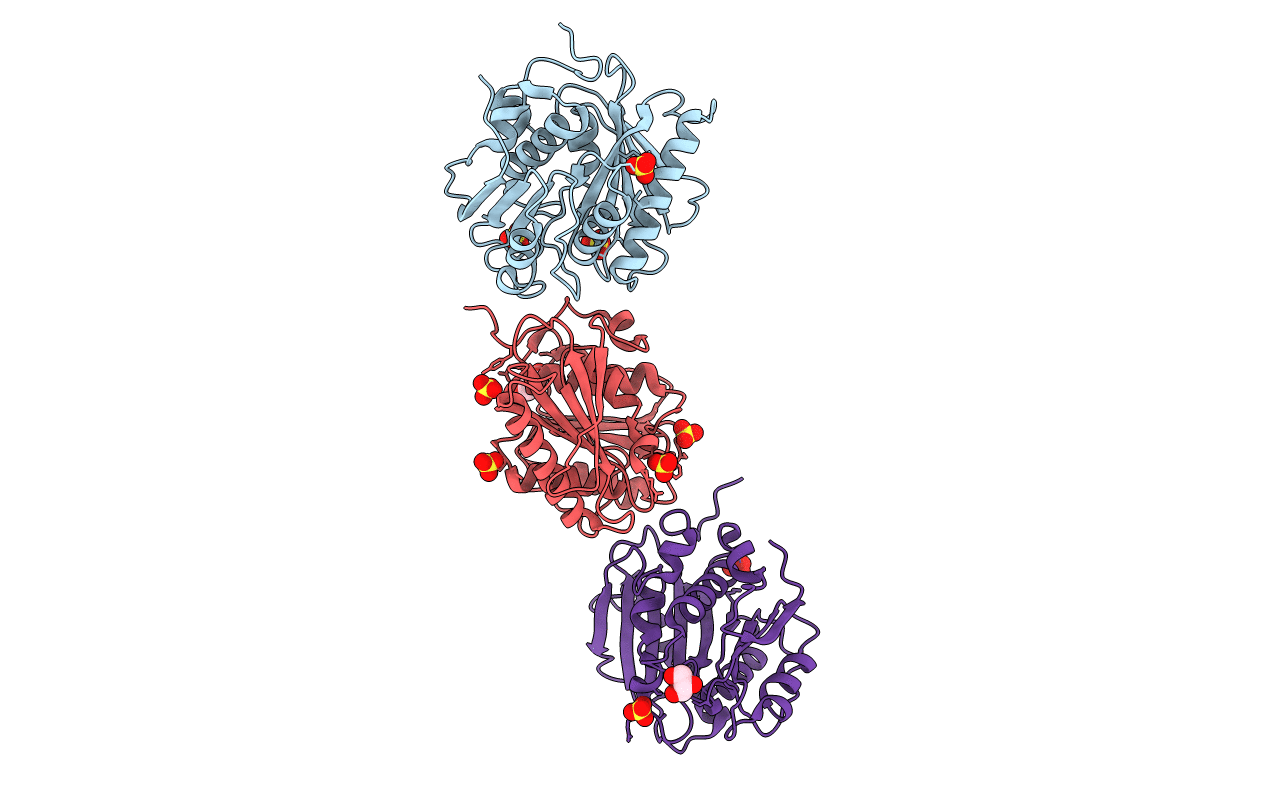
Deposition Date
2021-06-08
Release Date
2021-10-13
Last Version Date
2024-10-16
Entry Detail
PDB ID:
7OSB
Keywords:
Title:
Crystal Structure of a Double Mutant PETase (S238F/W159H) from Ideonella sakaiensis
Biological Source:
Source Organism:
Ideonella sakaiensis (Taxon ID: 1547922)
Host Organism:
Method Details:
Experimental Method:
Resolution:
1.45 Å
R-Value Free:
0.20
R-Value Work:
0.19
R-Value Observed:
0.19
Space Group:
C 2 2 21


